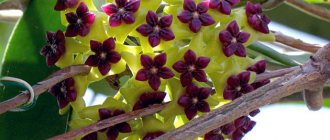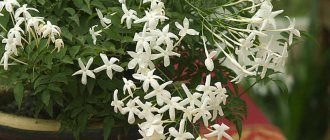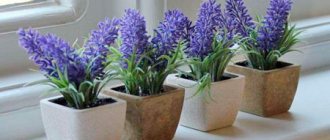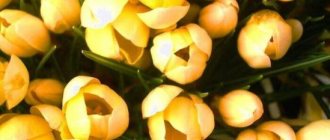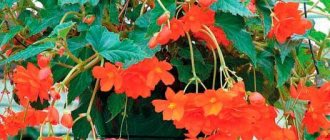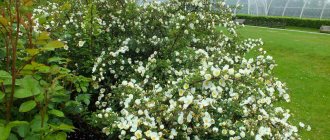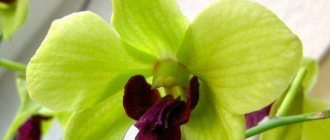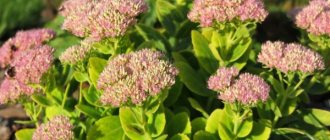What kind of plant is this and where does it grow?
Gerbera is a herbaceous flowering plant characterized by a short stem and a rosette of light green leaves at developed roots. Impressive peduncles rise up from the rosette; they are slightly pubescent. Later, very exquisite single inflorescences of the most unexpected colors appear on them.
Interesting fact! Unknown flowers were first noticed in South Africa in 1717 by the Dutch scientist J. Gronovius.
The homeland of the houseplant (at least, most of the species) is Madagascar and southern Africa. Some species can be found in Asia. Gerbera belongs to the genus of perennial herbs, the Asteraceae or Compositae family.
The flowers of the plant are shaped like the blooms of Osteospermum, Nivyanik and other “daisies”. The color can be any, but not blue. Flowers are collected in “baskets”. The diameter of the flowers is 4-15 cm, there are varieties with a diameter of up to 30 cm. The flowering time reaches 3-4 months.
The fruit is an achene. There are up to 500 seeds in 1 gram. Their viability lasts up to six months. The weight of one seed is about 0.002 g. The flower stalks reach a height of 0.6 m; they have no leaves.
The rhizome of the plant is well developed and quite strong.
The leaves are pinnate, dissected, narrow, the ends are pointed, and grow up to 35 cm in length. They are collected in basal rosettes. The bases and petioles of some varieties are quite pubescent.
Botanical description and history
Yellow gerbera belongs to herbaceous perennial plants of the Asteraceae (Asteraceae) family .
It has a thick stem and feathery leaves collected in a rosette, pointed at the end, up to 20 cm in length. Inflorescences are baskets with a diameter of 5-15 cm, bright in color. Has tubular central flowers. They bloom for about 3 – 5 months, in nature this happens twice a year. The petals are velvety. The fruit of a gerbera is an achene. The root system is developed and quite powerful. Peduncles are tall, up to 60 cm.
In nature, it grows in the subtropics, its homeland is South Africa. The flower was discovered there at the beginning of the 18th century by the botanist Gerber, hence its name. But there is also a long-standing beautiful legend about the origin of gerbera. In ancient times, there lived a forest nymph, Coat of Arms, of incredible beauty; everyone envied her and gave her no rest. And she really wanted to become invisible and in the end turned into a simple flower.
Decorative varieties for growing in pots
There are about 80 varieties of the plant. In indoor conditions, compact varieties of Jameson's gerbera most often take root. The key distinguishing feature is the low peduncle, up to 30 cm. There are also forms of classic green-leaved gerbera that are more suitable for the garden, as well as Gerbera Wright, Abyssinian, Ferruginea DC, etc.
Plant varieties are distinguished by beautiful flower shapes. They all resemble daisies, but they are double, simple, needle-shaped, with curling petals. And the variety of colors is simply amazing.
White, orange, yellow and red flowers are not a complete list of gerbera colors.
Note! For home breeding, the Festival variety would be an ideal option. It is he who manifests himself as profitably as possible, because... has a stunning appearance. Shortened peduncles are combined with expressive and large flowers.
In addition, varieties Happipot, Hummingbird, Parade, and Ilios are popular for growing in pots. And the famous Durora Mix variety boasts compact dimensions, large semi-double flowers and unpretentiousness. A few more varieties:
- Golden Serena has flowers with a diameter of 12 cm.
- Harley - with flowers up to 7 cm.
- Brigadoon Red will delight you with double flowers.
Types of gerbera
There are about 70 species of gerberas, and breeders are constantly working on new varieties and colors. There are even unusual species with semi-double inflorescences. Most of them are cultivated in the garden, but gerberas also feel good in apartments.
Gerber Jameson
This variety is most often grown at home on windowsills all over the world. From it came the rest of the species that are now actively cultivated. It is distinguished by a thick stem, a raised foliage rosette and long leaves with a slight edge.
Jameson's gerbera flowers resemble a very large daisy. The most common colors are red, yellow or white, but in general there are about 30 of them. In fact, a 10-centimeter flower is an inflorescence-basket of small reed and tubular flowers in several rows.
Photo: domashniecvety.ru
Gerbera Aldebaran
This is a very beautiful and compact decorative gerbera, which is often grown in the garden. It belongs to small-flowered varieties with narrow-petalled inflorescences. This is a mini-gerbera with a diameter of 5-10 cm and a stem height of up to 40-45 cm.
Photo: youtube.com
Gerbera Hollywood
Large, wide-petalled inflorescences reach up to 15 cm in size. This is a large standard gerbera on a high peduncle that will effectively complement any flowerbed. Baskets of rich pink color with an orange-greenish center look especially good.
Photo: wikiznanie.ru
Gerbera Vega
Another large-flowered variety will complement your outdoor seedlings and decorate them with bright orange-yellow inflorescences. Gerbera Vega was bred in America and is widely used for decorative purposes. Large orange-yellow baskets up to 10-13 cm in diameter bloom on peduncles up to 70 cm high.
Photo: pxhere.com
Gerbera Viola
Gerbera Viola is interesting for its beautiful semi-double or double inflorescences. This is a medium-sized, narrow-petaled variety. The peduncle stretches up to 40-50 cm, and the diameter of the baskets reaches 10-11 cm.
Photo: 2sotki.ru
Gerbera Mars
Mars is a spectacular variety with a bright, rich red color, for which it is beloved by florists. This is a tall and large gerbera from 65 cm and above with large inflorescences of 11-13 cm. It is very bright, sunny and truly summer-autumn.
Photo: iprofiles.ru
Kalanchoe (60 photos): types and features of care
Photo
You can see in the photo what the flowers, stems and leaves of different varieties of plants look like.
How to replant a gerbera after purchase (video)
In addition to their attractive appearance, bright exotics from the tropics can bring great benefits to their owner, purifying the air from toxic fumes of plastic, carbon dioxide and other harmful substances. They will add optimistic notes to any interior and will please the eye for a very long time.
Transvaal daisies are an excellent solution for those who want to bring bright colors and carefree into their home or garden. A gerbera in a bouquet or in a pot is a beautiful, symbolic and even useful gift, and if you know how to properly care for the plant, it will thank you with fascinating basket inflorescences.
Caring for an indoor flower
At home
- To grow the plant at home, you will need a breathable clay pot. The soil you need is slightly acidic: sand, peat and leaf soil in a ratio of 1:1:2.
- Watering is moderate, so that the soil does not dry out. The water should be soft, room temperature. Water along the edges of the pot so as not to get on the root rosettes. You can also pour water into the tray for 30 minutes. Stagnant water can cause rot. The plant likes to be sprayed, but not on the flowers.
- Dry air is detrimental to gerberas.
- The plant is light-loving, and the duration of flowering depends on the daylight hours, so a place with bright but diffused light is suitable. Regular ventilation of the room is also important.
- You will need to feed the flower 3-4 times a month with mineral complex fertilizer. Organic will not work.
- During the flowering period, the optimal temperature will be 16-24 degrees Celsius. In winter – 12-14. Gerberas are replanted if necessary in early spring.
In the garden
The planting location is required to be illuminated by the sun for most of the day. The soil needs to be fertilized with inorganic fertilizers. In this case, the flower stalks will not stretch and will retain their size and color.- During the growth period, the flower is watered abundantly, and after flowering - moderately, but the roots should not be allowed to dry out. Water should not get on the sheets or into the socket.
- The plant should be fed with mineral fertilizers every 2 weeks until autumn.
There is a variety of garden gerbera, which you can learn about in this material.
Temperature
Red gerbera or any other variety is a plant native to Africa. Therefore, when creating optimal conditions, you must first take care of a comfortable temperature. It should be from +21 to +25 °C. If it is lower, the crop will enter a dormant state, flowering will stop, and growth will slow down. In winter, the minimum value is +16 °C. If necessary, you need to install heating, otherwise the plant will die from hypothermia.
Before flowering, you can ventilate the room a little, because a little fresh air will benefit the gerberas. However, drafts should not be allowed, as they can cause the crop to wither.
Difficulties and illnesses
Gerberas may not bloom in the following cases:
- If there is excess or lack of light. The flower does not tolerate direct sun, which causes burns, but deprivation of its light has a detrimental effect.
- Touching sockets when watering.
- Not enough space in the pot.
- Transplanting into a too large pot after a small one. It takes a long time to adapt.
In general, the plant is resistant to diseases and pests, but diseases still occur. The key reason is improper watering.
Recommendation! If you overwater a flower, the lower leaves and roots will rot. This causes rot and viral diseases.
Dangerous fungal diseases include:
- gray rot;
- powdery mildew.
Improper watering also causes fusarium and late blight.
Dry air also causes the death and appearance of spider mites. It can only be removed with fungicides.
The key condition for the absence of diseases is proper watering and maintaining air humidity . If this is violated, problems with the plant appear.
When planted in open ground, flowers sometimes suffer from aphids.
Growing multi-colored gerberas in the country: options for planting and use in landscape design
Effectiveness, unpretentiousness and long-lasting flowering have made Madagascar chamomile attractive for cultivation on the site. Thanks to its wide range of colors and versatility, gerbera can be used as a garden plant in an area decorated in any style, and can be planted next to any other flower crops: roses, callas, chrysanthemums and daisies.
Most often, a hybrid form of Transvaal daisies - it is interesting because it bears fruit with inflorescences of several different shades at the same time. A guest from South America is perfect for decorating space along fences and borders, creating compositions in flower beds and slides. In addition, mini-varieties of gerberas in various kinds of decorative pots and containers, which are placed on the veranda, balcony or gazebo.
Reproduction
Gerberas reproduce in several ways:
- Seeds . The germination period reaches 30 days. From the moment of sowing to the appearance of the first flowers, up to 11 months pass.
- Dividing bushes . This method is used to propagate very valuable varieties. Only three- or four-year-old gerberas are suitable for division;
- By cuttings.
IMPORTANT! Sowing of seeds is carried out in the spring in leaf soil with the addition of sand and turf. Seeds need to be sprinkled with 5 mm of soil. After the formation of 3-4 leaves, young gerberas are cropped into separate pots.
When dividing a bush, it is worth leaving 2-3 growth points on each separated plant. Such a plant also begins to bloom no earlier than after 10-11 months. This method is more suitable for valuable varieties, because... When sowing seeds, the color may vary significantly.
To propagate the cuttings in April-May, the mother bush with an earthen lump is removed, and the rosette is washed and cut off. The rhizome is planted in a greenhouse in loose soil at a temperature of 22-25 degrees. The cut is located 5 cm above the ground. After 7-10 days, young sprouts appear from dormant buds in the sinuses.
The flowers of this plant are so attractive that today their production is on an industrial scale. Despite the fact that gerberas are very heat-loving, and in many countries they grow only in greenhouses, the plant occupies a leading position in the number of flowers sold each year. This popularity can easily be explained by the many qualities that make the plant suitable for growing as a cut flower.
In a greenhouse with the necessary conditions, gerberas bloom without interruption from early spring to late autumn.
Appearance and features
The yellow gerbera in its appearance resembles a solar disk, and its petals resemble the rays of the sun . But there are varieties in which the petals are yellow, and the central part of the flower is much darker, and even approaches black.
Yellow gerberas can be double (similar to an aster), single (similar to a chamomile) or semi-double (something between an aster and a chamomile). It is not for nothing that the second name of gerbera is Transvaal chamomile. The petals are found both round and pointed.
Flowers in diameter can be small or large. Yellow gerbera lives 3 – 4 years. Basically, all the varieties of yellow gerberas we encounter are hybrids bred by breeders (Helios, Vega, and others).
All indoor and garden gerberas come from Jameson's gerbera and green-leaved gerbera . But only dwarf varieties with a height of no more than 30 cm are suitable for home cultivation. The varieties Orangina, Sweet Caroline and Sweet Honey are most often grown from yellow gerberas. Yellow gerbera lasts a long time when cut.
